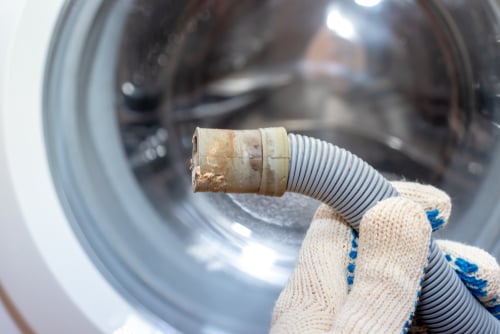Here are some common repair tips for your sliding screen door.
Don’t let a faulty sliding screen door derail your summer.
There are few sweeter sounds than patio doors opening to let the fresh air in after a long, cold winter. Your sliding patio screen doors are back to doing their job of letting the fresh air in and keeping the bugs and varmints out. But all year long, that screen door is exposed to wind, snow, rain and blowing debris that can clog the track and wear out the little plastic wheels. And when those wheels wear out, break or derail, the sound you hear is the door dragging.
If you don’t repair it right away, you could end up having to replace the whole door. Because using brute force can further damage the door and the track it runs on. And screen doors aren’t cheap.
The good news is, you can easily repair a sliding screen door, whether the problem is the wheels, the track or both. Follow these steps to get your screen door opening and closing smoothly again in no time.
Go off the rails.
There should be two adjustment screws near each bottom corner of the frame. Turn them counterclockwise to loosen the wheels and lower the door. Reach down and raise one wheel out of the door track using your fingers or a flathead screwdriver. Then lift the door up and pull the bottom edge out of the bottom track. Pull down to remove the top of the door. Put the door on a table or sawhorses to examine and replace the wheels.
Start at the bottom.
Before you start removing the wheels, vacuum any accumulated dust, debris and gunk inside the bottom track—that could be all that's preventing your screen door from sliding freely. But don’t apply oil or grease to the track. Lubricants will trap more debris and dust in the track, putting you back in the same predicament.
Set things straight.
Look for any dents in the top and bottom tracks. Carefully bend them back into shape with a pair of pliers or straighten them with a small wooden block. Hold the block against the bent area and softly wrap it with a hammer.
Pop the wheels.
Now it’s time to examine and replace the wheels. Remove the adjustment screws and gently pry the wheels out with a finger or a flathead screwdriver. There may be clips holding each wheel and spring assembly in place. Carefully disengage them and remove the wheels and spring assemblies.
Roll into the hardware store.
Take one of the wheels to the hardware store to make sure the new set is a match. If you can’t find the ones you need, look online. You should be able to find replacement wheels directly from the manufacturer. If not, you may need to replace the whole door.
Get back in your groove.
The new wheels should attach to your screen door the same way as the old ones. Make sure to engage the clip that holds them in place. Replace the adjustment screw. Slot the door into the upper track, then drop it straight down into the lower one. Hold the door so the frame is about a quarter-inch from the edge of the door jamb. Turn the adjustment screws clockwise till the frame is parallel to the edge of the door jamb. Adjust the screws until the frame is about an eighth-inch above the tracks. If it drags, loosen the adjustment screw slightly to adjust the wheels and raise the door.
At Frontdoor, we know you love getting things done around the house. Staying in control of your to-do list is easier when you can keep the small things from turning into bigger—and more expensive—ones. We’re here to make it easier to prevent problems instead of reacting to them. We help you gain the peace of mind that comes with staying on top of your home’s health.
Want to learn more about making simple DIY repairs on the inside or outside of your home? Download the app if you haven’t already, and chat with a helpful, friendly Frontdoor expert.
Frontdoor assumes no responsibility, and specifically disclaims all liability, for your use of any and all information contained herein.
Was this article helpful?







